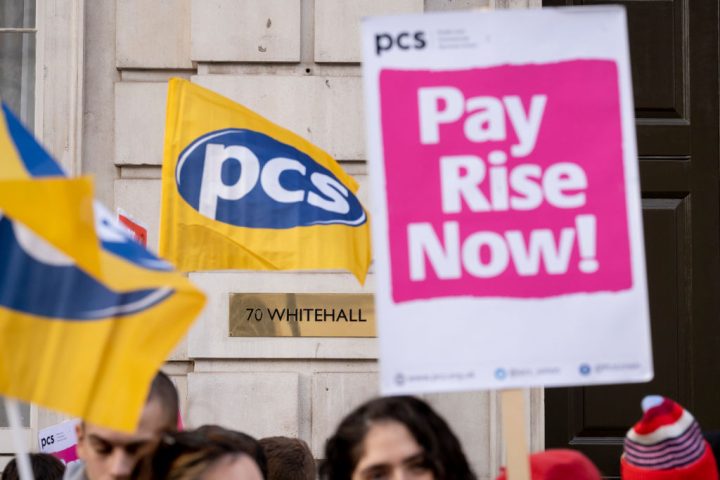You’ve got to hand it to the trade unions: they’ve done a fine job rallying the public behind industrial action that has caused widespread disruption and inconvenience. Despite train cancellations, school closures and medical appointment delays, nearly two-thirds of the British back the nurses’ walkout and close to half back the teachers’ strike. Even sizeable minorities support the ongoing train strikes, according to recent polling.
The argument from the unions – that their hardworking members deserve a hefty pay rise (in order to ‘improve service’) – has captured the public imagination. But how many of those who complete YouGov or Opinium surveys stop to consider the huge discrepancy between public and private sector pensions?
We are paying our public sector workers well, much of the benefit is simply locked away in the distant future
This is the glaring omission in the ongoing debate over pay. It is feebly referenced by Tory politicians and ignored by Labour. I’ve yet to hear a single union leader volunteer to mention the gold-plated, defined benefit pensions all-but-guaranteed to their members (at unsustainable cost to the taxpayer,) though I will gladly issue a clarification if I’m wrong.
This is not to say public sector remuneration is perfect as is; at a time when surging inflation and rising energy bills are hammering disposable incomes, some workers will have a point about their pay. Nurses have seen real pay fall significantly since 2010, yet over that period they have consistently pulled long, tiring shifts at unsociable hours. Teachers have watched real wages fall as class sizes have risen.
ONS labour market data has recently shown private sector wage growth outstripping that in the public sector, leading to warnings over the recruitment and retention of staff in teaching, nursing and elsewhere. But this hides the fact that public service jobs and pay were mostly left untouched by Covid, often for no work in return.
The problem is not the total package offered to public sector workers. Rather, it is the inflexibility of the package, how it is divided up between wages and pensions, and how it has allowed public sector workers to feel short-changed. In turn they are drawn to demand pay increases without any commensurate improvements in productivity.
As the IFS has underscored, generous defined benefit occupational pensions, virtually extinct in the private sector, remain ubiquitous in the public sector. The average teacher earned over £42,000 in 2021, but they were also benefitting from employer pension contributions of nearly 24 per cent, worth an additional £10,000 on average. A nurse on a headline wage of £35,000 a year actually receives a total package equivalent to almost £62,000 once accrued pension rights are taken into account. In other words, we are paying our public sector workers well, it’s just that much of the benefit is locked away in the distant future.
If the unions wish us to move towards a world where public sector employees are paid on par with their private sector counterparts, what justification is there for public sector employer pension contributions to remain triple that of those offered to workers in the private sector?
The current situation strips teachers, nurses and paramedics of control over their own pay and pension arrangements. In essence, two thirds of young workers do not see their pension as an important issue. Being offered a higher salary in the short term at the expense of a gold-plated pension might be attractive for some public sector employees earning £35,000. They may wish to invest in themselves and their families today. But others, perhaps starting work later in life or in a settled dual-earner household, might prefer a larger pension and a lower monthly income. This flexibility ought to at least be on the table in negotiations.
The harder truth, however, is that without some sort of radical reconsideration of these vast pension rights, the long-term fiscal health of the nation is at risk – as well as the deferred payments many will rely on. One official estimate is that the cost of future pension liabilities increased by £70 billion in 2021/22 alone, and the total – for nothing more than pensions liabilities for public sector workers – has now hit £2.6 trillion, equivalent to the size of the entire British economy. Even if unions are inclined to reject lower pensions in exchange for higher salaries, there is a risk with this high financial burden that their pension expectations may not be met in the future – strengthening the case for taking cash today over jam tomorrow.
Just as politicians should be honest about the cost, the public should be presented with the full picture on public sector pay and entitlements. Trade unionists, just like professional footballers, tech entrepreneurs and indeed everyone else, are perfectly entitled to fight in their own narrow, financial interests. But those interests ought to include exploring whether members would be better off earning more today, as they struggle to pay rent or exorbitant childcare fees, and a little less in retirement.






Comments